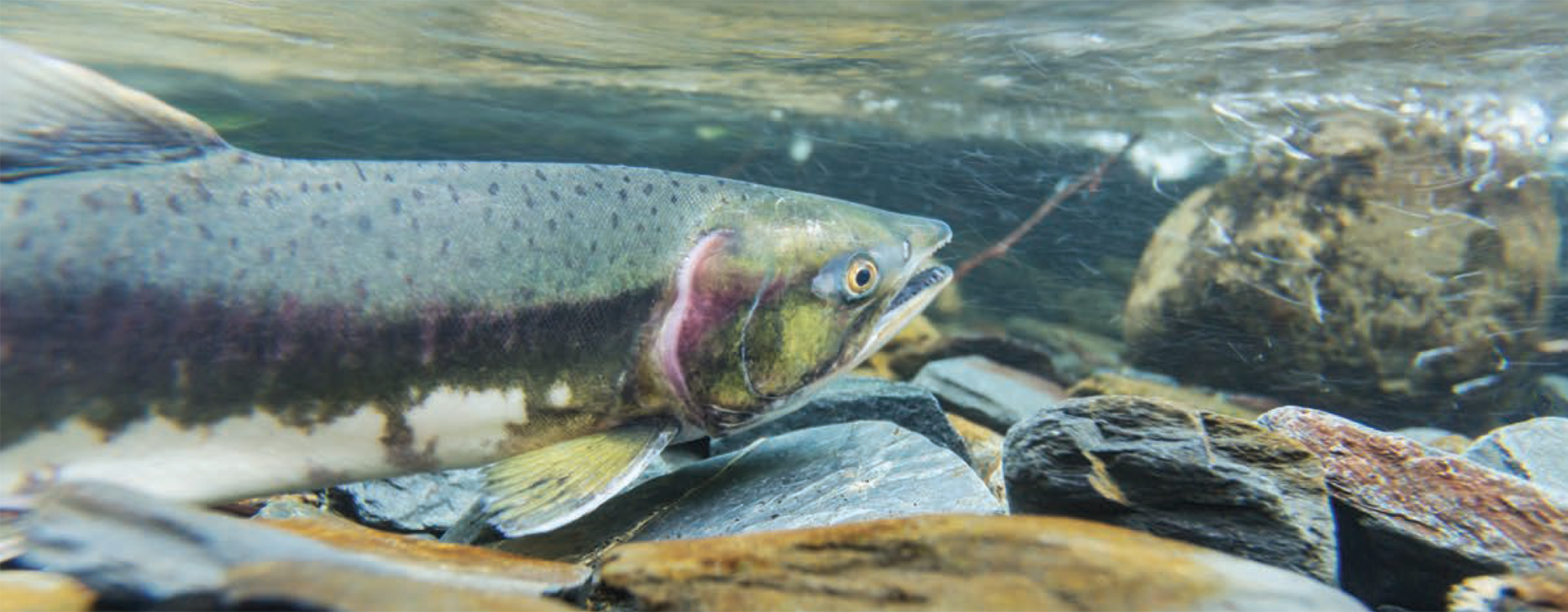Biennial College Research

Refereed publications
College of Forestry faculty continue to be recognized as active leaders in forestry-related research.

Fire summit brings experts together
In March 2018, Oregon State hosted the inaugural Fire Summit in Portland.

TallWood Design Institute: Building the Future
The TallWood Design Institute (TDI) is the nation’s leading research collaborative focused on the advancement of structural wood products and mass timber design.
College Research 2017-2018
The Oregon State University College of Forestry is known for collaborative research that brings real solutions to issues facing our forest landscapes and ecosystems. College research provides innovative approaches to enhancing people’s lives while also improving the health of our lands, businesses and vital ecosystems. The college implements its research vision through the Institute for Working Forest Landscapes (IWFL), a college-wide effort to develop adaptive forest management techniques that integrate social, ecological and economic objectives at the landscape level. The College of Forestry has a longstanding role as Oregon’s principal research engine for providing science-based information about forests and their value to people and communities.
Research Highlights
KATY KAVANAGH APPOINTED ASASSOCIATE DEAN FOR RESEARCH
Katy Kavanagh, a forest scientist whose research contributes to our fundamental understanding of how forest ecosystems function, was hired to serve as the college’s associate dean for research. Kavanagh previously served as head of the Ecosystem Science and Management Department at Texas A&M University and faculty member at the University of Idaho. Kavanagh is an alumna of Oregon State where she obtained a Ph.D. in Forest Science after earning BS and MS degrees in Forestry from SUNY College of Environmental Science and Forestry.
FACULTY CONTINUE PUBLISHING PROLIFICALLY
College faculty continue to be recognized as active leaders in research related to our forest landscapes, ecosystems and products. During calendar years 2016 and 2017, faculty produced more than 400 refereed publications.
THE INSTITUTE FOR WORKING FOREST LANDSCAPES
In November 2013, the college launched the IWFL to focus research programs on innovative approaches for managing landscapes that will enhance people’s lives and improve the health of our lands, businesses and vital ecosystems. In FY 2018, the first collaborative projects funded by the IWFL were completed. They explored how proactive management of forests can improve the health of rural communities and provide ecological integrity and long-term resilience of vital ecosystems:
- Quantifying Trade-offs and Synergies between Ecosystem Services (Lead PI: Matthew Betts)
- Opportunities for Biochar Production to Reduce Forest Wildfire Hazard, Sequester Carbon, and Increase Agricultural Productivity of Dryland Soils (Lead PI: John Sessions)
- Go Big or Go Home? Tools and Processes for Scaling Up Collaborative Forest Restoration (Lead PI: Emily Jane Davis)
FISH AND WILDLIFE HABITAT IN MANAGED FORESTS
The mission of this program is to provide new information about fish and wildlife habitat within Oregon's actively managed forests through research, technology transfer and service activities. Current priorities contribute to the scientific information base that supports the Oregon Forest Practices Act and Oregon's actively managed federal forestlands. This program provides important information to forest managers as they guide responsible stewardship of fish and wildlife habitat resources consistent with land management objectives while guiding forest policy and regulations. In FY 2017 and FY 2018, 10 funded projects completed, started or are continuing their work:
New Awarded (7/1/2018)
- Early Seral Habitat Longevity in Production Forests in the Oregon Coast Range (Matthew Betts)
- Biodiversity in Natural and Managed Early Seral Forests of Southern Oregon (Meg Krawchuk, Matthew Betts, James Rivers, AJ Kroll, Jake Verschuyl, Mark Swanson)
- Black-Backed Woodpecker Vital Rates in Unburned and Burned Forest Within a Fire-Prone Landscape (Jim Rivers, Jake Verschuyl)
- How Do Riparian Forest Gaps Affect Macroinvertebrates and Fish Diet in Headwater Streams (Dana Warren)
Continuing Awarded (7/1/2017)
- Experimental Evaluation of Plethodontid Salamander Response to Forest Harvest (Tiffany Garcia, AJ Kroll, Jessica Homyack, Claudine Reynolds, David Shaw)
- Does a Lack of Structures for Nest Building Limit Red Tree VoleOccupancy of Actively Managed Forest? (Damon Lesmeister, JohnBailey, Mark Linnell)
- Identifying Distribution Boundaries at the Upper Extent of Fish inStreams Using eDNA (Brooke Penaluna, Ivan Arismendi, Tiffany Garcia, Jessica Homyack, Taal Levi, Dana Warren)
- Quantifying Fish Response to Management Creating Riparian Forest Canopy Gaps (Dana Warren, Maryanne Reiter)
Ending Awarded (7/1/2016)
- Predicting Stream Nutrient Concentrations from Landscape Metrics to Develop Better Nutrient Criteria (Alba Argerich, Kevin Bladon, Jeff Hatten, Sherri Johnson)
- Assessing Pollinator Response to Natural and Anthropogenic Disturbances in Mixed-Conifer Forests (Jim Rivers, James Cane)
RESEARCH EXPENDITURES
In fiscal years 2017 and 2018, the college’s total research expenditures were $48,318,980. These expenditures were evenly split between the two years. Approximately 50 percent of the expenditures represented externally sponsored research efforts.
RESEARCH REVENUE
The college received a total of $24.36 million in research revenue in FY2017 and FY 2018. A total of $21.53 million was received from sponsored research awards with $2.83 million from research cooperative dues and revenues. In FY 2018, the college received $11.04 million in new and continuing awards, a five-percent increase over the previous fiscal year. College researchers submitted proposals to a wide range of outside sponsors including the U.S. Department of Agriculture, National Science Foundation, USDA Forest Service, U.S. Department of the Interior Bureau of Land Management, NASA, Oregon Departments of Forestry and Parks & Recreation, industry and non-governmental organizations.



